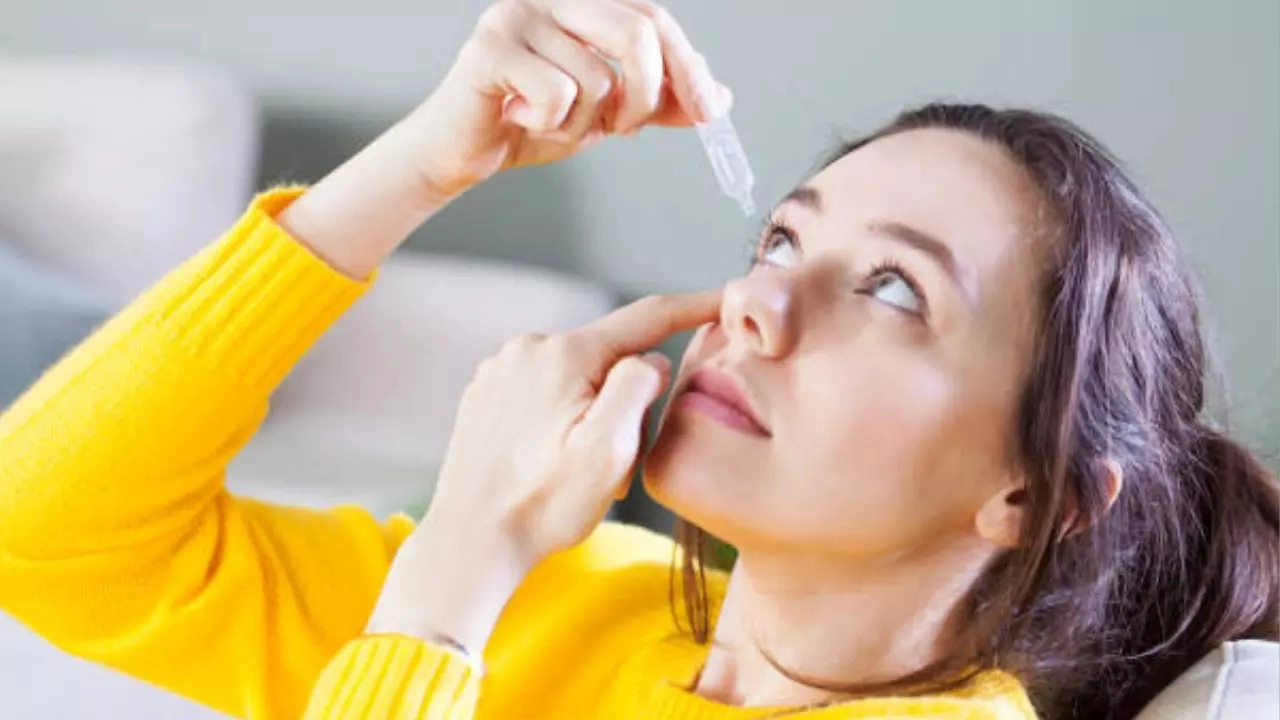Pallavi Mehra • 23 Jul 2024
How To Protect Yourself From Conjunctivitis And Stye During Monsoon Season? Expert Shares Tips

How To Protect Yourself From Conjunctivitis And Stye During Monsoon Season? (Image Credits: iStock)
The moisture and humidity in the air during the monsoon season create an ideal condition for the growth and spread of bacteria and viruses that can cause conjunctivitis, stye and other eye-related problems. The presence of allergens in the environment along with pollution and moisture in the atmosphere becomes conducive for microbial growth like bacteria, viruses or fungi. While people tend to prefer the monsoon immediately after summer, it comes with a potential range of health complications. It is crucial to take necessary precautions to reduce the risk of viral or bacterial infections, and eye infections, such as conjunctivitis and stye.
We got in touch with Dr Savitha Arun, Director, Medical Superintendent and Senior Consultant - Anterior Segment and Electrophysiology, Nethradhama Super Speciality Eye Hospital, Bengaluru who shares tips to protect yourself from conjunctivitis and style during monsoon.
Conjunctivitis And Stye
Dr Savitha Arun shares conjunctivitis, commonly known as ‘Eye Flu’ or ‘Pink Eye’, is the inflammation of the conjunctiva, which is the thin transparent membrane or clear tissue lining the inner surface of our eyelids and covering the white part of our eyes.
Whereas, a stye is caused due to a clogged oil gland on our eyelids, as a result of bacterial infection. It looks more like a pimple (acne), causes redness and swelling in the eyes and sometimes could be extremely painful as well.
Difference Between Conjunctivitis And Stye
Dr Savitha Arun explains conjunctivitis and styes are both common eye conditions, but they have different causes, symptoms, and treatments. Here are the key differences between them:
Conjunctivitis (Pink Eye)
Causes:
- Viral: Often caused by viruses like adenovirus. Highly contagious.
- Bacterial: Caused by bacteria such as Staphylococcus aureus or Streptococcus pneumoniae. Also contagious.
- Allergic: Triggered by allergens like pollen, dust, or pet dander. Not contagious.
- Irritant: Caused by irritants such as smoke, chlorine, or foreign objects. Not contagious.
Symptoms:
- Redness in the white of the eye or inner eyelid.
- Increased tearing.
- Itchy or burning eyes.
- Discharge that forms a crust during the night.
- Gritty feeling in the eye.
- Swollen eyelids.
There is another form of conjunctivitis that also occurs due to bacterial infection. Bacterial conjunctivitis is caused when bacteria exacerbate and infect the conjunctiva, primarily through droplet infection.
Bacterial and viral conjunctivitis are both contagious and can easily spread from one person to another, whereas allergic conjunctivitis, caused by allergens like pollen, pet dander or chlorine from swimming pools, is not contagious. Conjunctivitis generally spreads by touch or contact (direct or indirect), especially in children at school. Hence, it is crucial to maintain personal hygiene.
Stye (Hordeolum)
Causes:
Caused by a bacterial infection, typically Staphylococcus aureus, in the oil glands of the eyelid (meibomian glands) or hair follicles of the eyelashes.
Symptoms:
- A red, swollen bump on the edge or inside of the eyelid.
- Pain and tenderness at the site of the bump.
- Possible tearing and sensitivity to light.
- Crusting at the margin of the eyelid.
- A sensation of a foreign body in the eye.
Eyecare Tips To Prevent Eye Infections Like Conjunctivitis And Styes
Dr Savitha Arun shares a few tips and precautions to prevent eye infections like Conjunctivitis and Styes during the monsoon season:
- Maintain Good Eye Hygiene: Prevent seasonal eye infections by practising good hygiene. Refrain from sharing items like towels, napkins, handkerchiefs, pillow covers, cosmetics, make-up and personal care items to minimize infection risks. Wash your hands regularly to prevent the spread of germs.
- Avoid Rubbing Your Eyes: Resist the urge to rub your eyes at all times, as rubbing can cause redness, irritation, and potentially the spread of germs, leading to infections. Instead, use a warm compress or artificial tears if needed for relief. Consult your ophthalmologist for treatment, in case of irritation.
- Wash Your Eyes Regularly: After coming indoors during monsoon, wash your eyes with cold water. In case of dust storms before rain, make sure to rinse your eyes immediately. Debris-like dust particles and dirt cause eye irritation in general and could lead to eye infections.
- Wear Sunglasses and Goggles: It is important to cover your eyes with goggles or shades while being in swimming pools and avail protection while heading out. When outdoors, use sunglasses or goggles to shield the eyes from rain, UV protection and airborne diseases.
- Hydrate Your Body and Eyes: Proper hydration is a fundamental aspect of preserving eye health during any season. It is important to stay hydrated with 6-8 glasses of water daily, to maintain the natural salt balance of the body, which further helps in boosting eye health significantly.
- Nutrient-Rich Diet for Eyes: A well-balanced and nutrient-rich diet plays a vital role in preserving optimal eye function. Fruits and green leafy vegetables are rich in essential vitamins, including A, C, and E, as well as minerals and antioxidants such as zinc, lutein and zeaxanthin.
- Warm Compress Therapy for Stye: Apply a warm compress to your eyelids for 5 minutes to provide symptomatic relief. In case of any eye discharge, gently wipe away with a clean cloth and lukewarm water. You can also use eyelid wipes and apply antibiotic ointment to the eyelids.